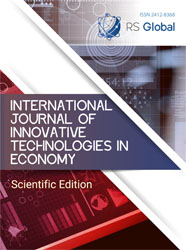RESEARCH ON REGIONAL ECONOMIC COOPERATION BETWEEN CHINA AND MONGOLIA
Abstract
Regional economic integration has become inevitable to promote the further development of regional economy in China and Mongolia. Since China’s reform and opening up and Mongolia’s democratic revolution, China Mongolia regional economic cooperation has been developing continuously. This paper summarizes the trend of economic cooperation between China and Mongolia through the analysis of economic and trade cooperation between China and Mongolia and the influencing factors of regional economy.
References
Yu Xue Jun. “Strategic Analysis of China-Mongolia Regional Economic Cooperation” [J]. Inner Mongolia Foreign Affairs Office,2007
Open Society Forum. “Mongolia's financial and economic crisis” [J]. Annual Report-2009, http://www.forum.mn.
Bao Ming Qi. "Sino-Mongolia Regional Economic Cooperation Research" [D]. Jilin University, 201
Zhang Zhiying. “Development of International Division of Labor Theory”. China Economic Times,2013
Fan Fu Zhuo. "Regional Division of Labor: Theoretical, Metric and Empirical Research" [J]. Maritime Academy of Social Sciences, 2009
Ts.Munkh-Orgil.“Regional Integration Processes and Mongolia”[J]. The Mongolian Journal of International Affairs,2005
S. Dashtsevel. “The Alliance Space of East Asia in Mongolia's Third Neighbor Policy” [J]. Ulaanbaatar, National University of Mongolia, 2012
Roberta Capello. Regional Growth and Development Theories Revisited. Dept. of Management, Economics and Industrial Engineering Politecnico di Milano, 2009
O.Oyun. “Mongolia China Trade and Economy cooperation Some Problem” [J]. Inner Mongolia University, Center for Mongolian Studies, 2018
T. Battsetseg. “Mongolian China Regional Relations” [J]. Institute of International Studies, Mongolian Science Academy, 2012
L. Begzjav. “Mongolia China Cooperation 1949-1999” [M]. Ulaanbaatar, National University of Mongolia, 1999
Views:
548
Downloads:
560
Copyright (c) 2020 Mavidkhaan Baasandulam

This work is licensed under a Creative Commons Attribution 4.0 International License.
All articles are published in open-access and licensed under a Creative Commons Attribution 4.0 International License (CC BY 4.0). Hence, authors retain copyright to the content of the articles.
CC BY 4.0 License allows content to be copied, adapted, displayed, distributed, re-published or otherwise re-used for any purpose including for adaptation and commercial use provided the content is attributed.











